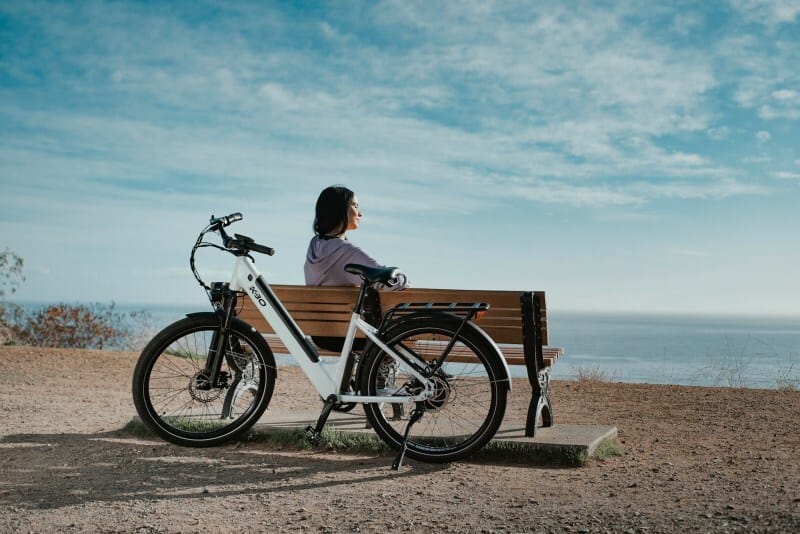Cycling through foreign areas offers a unique way to experience local cultures and scenery. Navigating narrow lanes in Portugal or busy city streets in Tokyo requires cyclists to stay alert to different road rules, signage, and cycling infrastructure. Exploring new places on two wheels brings freedom, but it also requires awareness of potential risks.
Foreign bicycle trips come with risks that differ from riding at home. Traffic rules, local driving habits, and unfamiliar road surfaces can all affect safety. Even experienced cyclists may encounter hazards, such as unfamiliar signals or road layouts. Reviewing these cycling safety tips before departure can help riders prepare more effectively.
Good preparation is key to safer cycling abroad. Researching local regulations, checking equipment requirements, and learning emergency steps all help make trips smoother. Careful planning makes journeys more enjoyable and can help lower the risk of mishaps or injury.

Navigating Insurance Gaps When Cycling Abroad
Coverage Limitations
Arranging insurance for bicycle travel overseas can be more complicated than travellers expect. Some believe their regular travel insurance will cover cycling activities, but this is not always the case. Many standard travel policies exclude bicycle accidents or limit bike reimbursement.
Before finalising travel plans, reviewing current insurance is an important step. Most homeowners or renters policies may not cover bicycles used internationally beyond low value caps. They often exclude liability if a cyclist injures someone else.
Finding Specialized Protection
Cycling liability insurance addresses these gaps, providing cover designed for cycling abroad. Reliable resources such as the Lonely Planet travel insurance guide help clarify what is covered.
Standard policies may exclude competitive riding, e-bikes, or expensive equipment. Claims involving these activities or bikes may be denied. Reviewing policies before travel helps spot any gaps or exclusions.

Preventing Theft During International Cycling Trips
Effective Locking Techniques
Bicycle protection goes beyond insurance. Theft is a common risk for travellers in many cities, especially where cycling is popular. Tourists may not be aware of local advice about secure parking or high-theft areas, making them more vulnerable.
When planning routes and sightseeing stops, bike security should be a top priority. Using a strong U-lock through the frame and rear wheel, attached to a fixed object, helps deter theft. Adding a second lock for the front wheel gives extra protection.
Secure Storage Options
Bike storage options vary depending on the type of accommodation. Some hotels offer secure bike rooms or allow in-room storage. Hostels and rentals may have different arrangements. Storing bikes indoors overnight, whenever possible, can further reduce risk.
Documentation for Claims
If a bike is stolen despite precautions, organized documentation helps with claims and recovery. Photos of the bike, serial numbers, and digital copies of receipts make claim validation easier. Insurance providers note that documented claims are often resolved more smoothly.
For those travelling with high-priced bikes, GPS tracking tools offer another layer of protection. Trackers hidden inside frames or under seats can send real-time locations and alerts for suspicious movement.

Route Planning and Local Knowledge
Good route planning abroad goes beyond choosing the shortest path on a map. Offline maps and elevation profiles should always be downloaded, but local knowledge is just as valuable. Bike shops and cycling clubs can provide tips about construction zones, cobblestone streets, or seasonal road closures. A useful cycling route planning guide also shares practical steps for preparing routes abroad.
Building extra time into your schedule is essential. Weather, traffic, or terrain can change faster than expected in unfamiliar areas. Identifying alternative “safe detours” ahead of time, such as riverside paths or well-marked cycleways, ensures that you can quickly adjust without stress. Before setting out, mark secure parking hubs near tourist attractions and train stations, so you always know where to lock up.

Managing Liability Risks on Foreign Roads
Local Traffic Laws
Theft is not the only risk to consider. Cyclists must also be aware of different legal rules and potential liability abroad. Cycling laws and responsibilities vary worldwide, changing what is expected of travellers.
Knowing local traffic norms and insurance requirements prepares travellers for how to respond in case of a collision. Collisions with people or vehicles can lead to high costs, including medical bills and legal fees.
Liability Protection Abroad
Having the right coverage in place before travel creates a strong safety net. Specialized insurance helps protect cyclists from claims if someone else is injured or property is damaged. These plans may cover legal costs, medical payments, and repairs.
Final preparations should include keeping documentation handy at all times. Bringing identification, emergency contacts, and proof of insurance is essential for any cycling trip abroad. Both digital and printed versions allow for a quick response in an emergency.

Emergency Preparedness and Medical Considerations
When cycling abroad, accidents or health issues may require quick responses. Carrying a compact first-aid kit with wound wipes, plasters, and a thermal blanket can help in minor accidents. Checking a first aid essentials guide for cyclists helps ensure your kit includes small but vital items, from antiseptic wipes and bandages to electrolyte packets and emergency cards. Add a printed card with your blood type, allergies, and key emergency phrases translated into local language.
Know the emergency numbers in your destination (for example, 112 in most of Europe) and pin your hotel’s location on your phone for quick navigation back. Keep both digital and paper copies of important documents – passport, insurance, and emergency contacts – in case of loss or theft.
Cyclists with regular medication should pack more than they need and split supplies across different bags. Storing electronic copies of prescriptions can also make it easier to replace medication abroad.

E-Bike Considerations for International Travel
Country-Specific Regulations
E-bikes require extra planning steps for overseas travel. E-bike trips mean handling country-specific requirements and new risks. Laws can range from strict registration and insurance mandates to more flexible policies.
Prior to international trips, check government sources for destination-specific rules on motor power, speed limits, and approved cycling routes. Requirements for liability coverage, registration, or permits often depend on e-bike weight, speed, and local category.
Battery Transport Safety
Before flying, examine airline rules for transporting batteries. Lithium battery safety is an important concern for e-bike travellers. Most airlines do not allow these batteries in checked luggage, and carry-on battery size restrictions can vary. For practical guidance on what to expect when traveling with your e-bike, see this guide to flying with an electric bike.

Charging Challenges Abroad
Arriving at a destination with incorrect charging equipment can disrupt plans. Different voltage systems and plug types mean travellers need the right adapters or transformers for safe charging.
The higher price and strict regulations for e-bikes mean insurance should be carefully considered. E-bike insurance is often more expensive due to higher prices and risk profiles. Reviewing the insurance document closely ensures coverage fits international travel plans.
Pre-Departure Bicycle Safety Checklist
Cyclists should complete important safety steps before international travel. Verifying bicycle insurance covers international travel and liability is essential. Documenting bikes with photos and serial numbers helps with potential claims.
Checking local traffic laws and cycling regulations at the destination is recommended. Packing appropriate safety gear including helmet, lights, and reflective clothing improves visibility. Learning basic bicycle repair phrases in the local language aids communication.
The post Essential Safety Tips for Foreign Bicycle Adventures appeared first on Moss and Fog.
